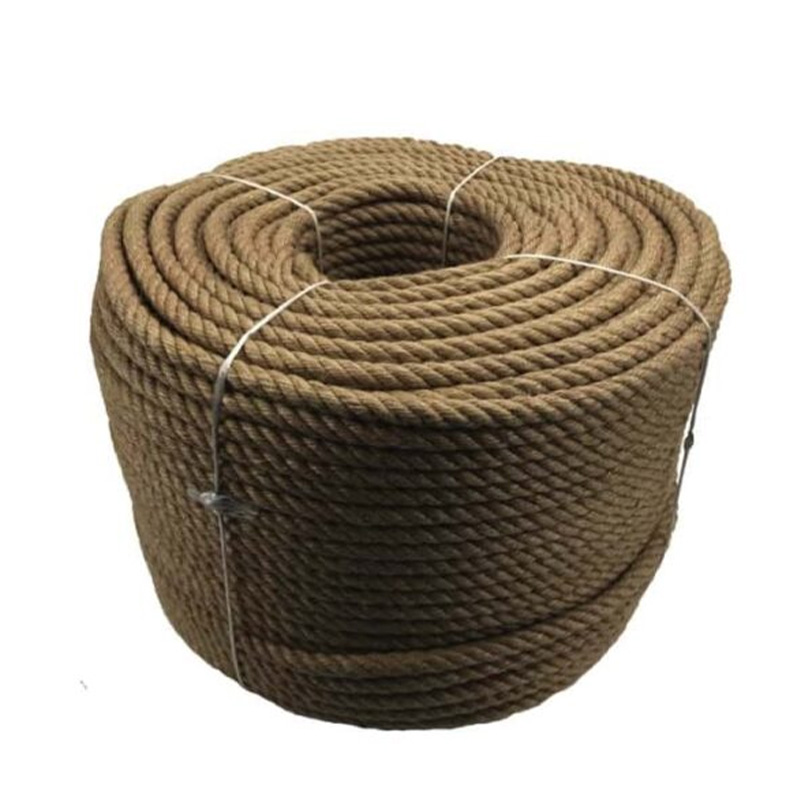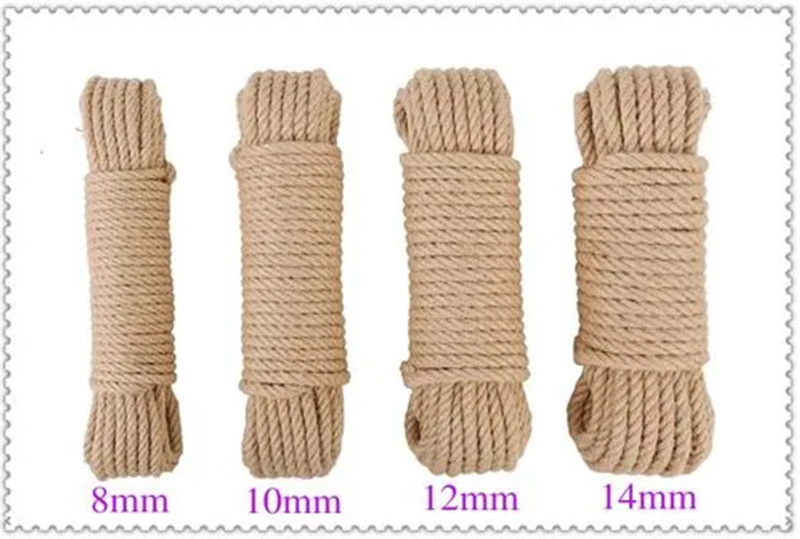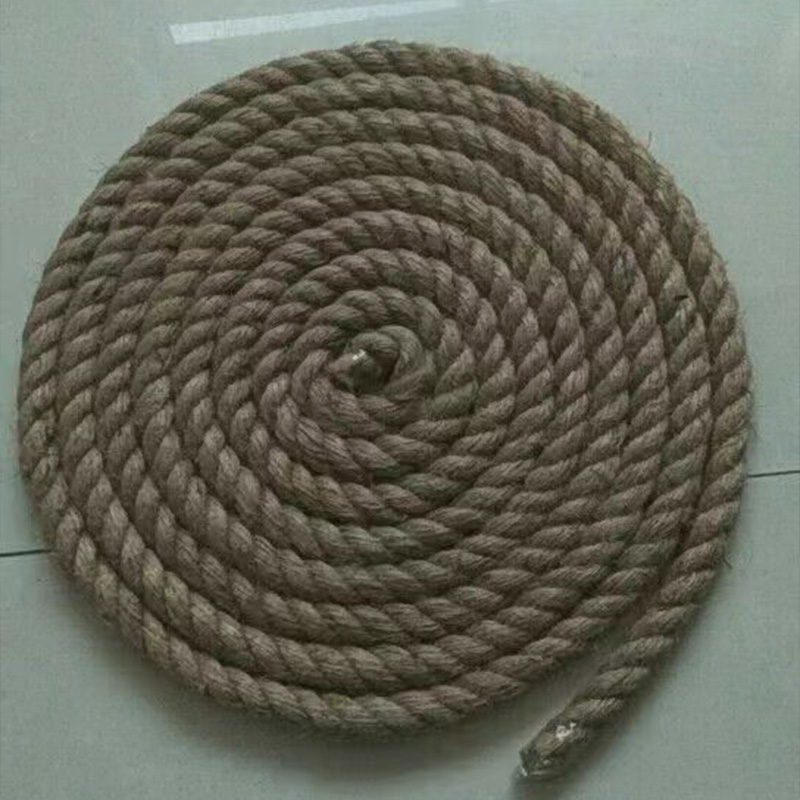Jute Rope for Sale – Eco-Friendly, Durable, Bulk & Wholesale
A Field-Tested Look at Natural Jute Rope (and Where to Buy It Without Guesswork)
If you’re hunting for dependable Jute Rope For Sale, here’s the short version: demand is rising again as brands pivot back to biodegradable materials, and the better mills are quietly winning on consistency rather than slogans. I’ve toured a few facilities; the difference shows up in moisture control, twist uniformity, and honest testing, not flashy packaging.

Specs that actually matter
Below are practical ranges you can expect in real-world use (not just brochure numbers). To be honest, the “right” rope depends on your environment—humidity and UV are the big variables.
| Parameter | Typical Value |
|---|---|
| Material | 100% natural jute fiber, oil-free option |
| Construction | 3-strand or 4-strand laid (S/Z lay on request) |
| Diameter range | ≈ 4–40 mm (tolerance ±3–5%) |
| Breaking strength (12 mm) | ≈ 6.5–8.2 kN per ISO 2307; lab RH 65% ±5% |
| Elongation at break | ≈ 8–12% (real-world may vary) |
| Moisture content | ≈ 10–13% at 20°C/65% RH |
| Service life | Indoors: 2–4 yrs; outdoors: 6–24 months depending on sun/rain |

Process flow, testing, and what I look for
Materials: graded raw jute, softened with water/steam; batching oils if requested (food-contact projects usually skip oils). Methods: carding → drawing → spinning → strand forming → rope lay → conditioning → spooling. Better mills log humidity at each step—sounds nerdy, but it’s crucial.
Testing standards: ISO 2307 (mechanical properties of fiber ropes), ISO 9554 (rope terms), plus REACH and RoHS screening; some buyers ask for OEKO‑TEX for dyed decorative lines. Lab snapshots I’ve seen: 12 mm rope breaking at 7.6 kN median; water uptake +22% mass after 24 h soak; UV exposure led to ≈10% strength drop after 100 h—so, use shade or rotate stock outside.

Where it’s used (and why)
Packaging and bundling, garden trellising, light marine lashing, theater and retail displays, pet toys, rustic décor, carpet edging—the usual suspects. The draw is biodegradability and that warm, natural texture. Many customers say they switched from synthetics simply because jute “feels right” for brand storytelling.
Vendor comparison (quick reality check)
| Vendor | Certs | MOQ | Lead Time | 12 mm Break (≈) | Notes |
|---|---|---|---|---|---|
| XT ShuoDing (Hebei, China) | ISO 2307 tests, REACH/RoHS, optional OEKO‑TEX | ≈ 500–1,000 m | 10–20 days | 6.5–8.2 kN | Stable twist; custom dye/splice |
| Local hardware brand | Basic QC only | Small reels | In stock | 4.5–6.0 kN | Convenient but variable moisture |
| Marketplace seller | Claims only | 1 roll | 3–7 days | 3.5–6.5 kN | Check odor/oil residue |

Customization and logistics
Cut-to-length, diameter matching, dyed colors, anti-mildew dip, spliced eyes, shrink-wrapped coils with private labels—the works. Origin: Room 1410, No. 119 Zhongxing East Street, Xiangdu District, Xingtai City, Hebei Province, China. Typical export packs: 100–250 m coils, palletized; HS code available on request.
Case notes from the field
Garden brand (EU): switched to Jute Rope For Sale for trellises; sell-through rose 18% after “plastic-free” labeling. Returned coils dropped after moisture spec tightened to ≤12%.
Retail display house (US): used 10 mm dyed jute for window rigs; tensile testing per ISO 2307 hit 5.1 kN median; they rotate lines every 9 months to keep color fresh—smart move, honestly.

Why this matters now
Sustainability isn’t just a slogan; jute is renewable, compostable, and—surprisingly—cost-stable compared with some synthetics lately. If you need Jute Rope For Sale that balances aesthetics and load, get test sheets, ask about humidity logs, and don’t skip a small pre-shipment pull test. I guess that’s the unglamorous secret.
References
- ISO 2307:2019, Fibre ropes — Determination of certain physical and mechanical properties.
- FAO Jute, Kenaf and Allied Fibres — Market and sustainability briefs.
- OEKO‑TEX Standard 100 — Textile safety requirements (dyes and finishes).
- ECHA REACH SVHC Guidance — Substances of Very High Concern compliance overview.
Share
-
Lithium Battery Welding Machine | High-Precision, Fast, SafeNewsNov.17,2025
-
Aluminium Guide Roller | Anodized, Lightweight, Low-NoiseNewsNov.17,2025
-
Tofu Cat Litter Bulk – Eco, Low-Dust, Fast Clumping SupplyNewsNov.17,2025
-
Equipment for Lithium Cell Assembly | Automated & PreciseNewsNov.10,2025
-
Square File Tool – Precision Cut, Hardened Steel, VersatileNewsNov.10,2025
-
Lithium Ion Battery Assembly Machine | Automated, High-SpeedNewsNov.10,2025







